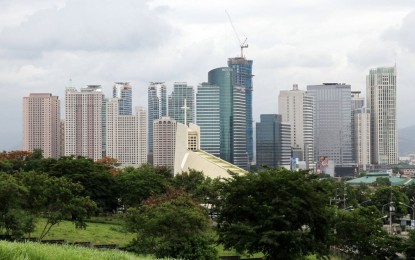
PNA file photo
MANILA -- Finance Secretary Carlos Dominguez III said had Congress approved last year’s budget on time, domestic growth would have improved to as much as 6.8 percent from the previous year's 6.2 percent.
“If the 2019 budget was passed on time and the National Government was able to replicate the 2018 growth in government consumption and government construction in 2019, the economy would have grown by an additional 0.9 percentage point or 6.8 percent instead of 5.9 percent,” he said.
Philippine full-year growth last year, as measured by gross domestic product (GDP), was lower than the government’s 6-6.5 percent target band.
The Philippine Statistics Authority (PSA) on Thursday also reported that growth in the last quarter of 2019 grew by 6.4 percent, faster than the revised 6-percent expansion in the previous quarter.
An economist of Rizal Commercial Banking Corporation (RCBC) said the 5.9-percent output in 2019 continues to show the economy's resiliency despite the impact of the slowdown in the first half of the year due to the government’s budget approval delay and the global challenges.
In a reply to e-mailed questions from PNA, RCBC chief economist Michael Ricafort said the domestic economy remains among the strongest in the region and even with the major economies around the world.
“It is worth noting that Philippine economic growth for 2019 at 5.9 percent is still considered decent and resilient, in view of external challenges/risk factors especially the global economic slowdown in 2019 largely brought about by the lingering US-China trade war since July 2018,” he said.
For this year, Ricafort forecasts a 6.4-6.6 percent expansion for the domestic economy with the upper end of the projection within the government’s 6.5-7.5 percent target.
He identified government spending, especially on infrastructure, consumer spending, improvement in investment and capital formation, and optimism on the US-China trade pact as among the factors that would possibly drive growth.
“Faster government spending would be a major catalyst for faster Philippine economic/GDP growth in 2020, after the government underspending in the early part of 2019 slowed down GDP growth by about 100 basis points,” he added.
Ricafort said possible approval this year of the remaining tax reform measures, such as the Corporate Income Tax and Incentive Rationalization Act (CITIRA), will be a plus for domestic growth because this will address investors’ concerns and boost capital formation.
These factors are seen to counter the impact of the geopolitical issues overseas, the uncertainties on global growth, the eruption of Taal Volcano, the African swine fever, and the still unidentified corona virus that reports said originated from China.
In a report Thursday, UnionBank chief economist Ruben Carlo Asuncion said the 2019 growth ended the seven consecutive 6-percent expansion for the Philippine economy.
Asuncion said government consumption rose nearly twice in the last quarter last year and helped boost growth.
However, the catch-up infrastructure spending program in the second half of the year was not enough to lift growth, he said.
For this year, Asuncion forecasts growth to be at 6.6 percent and rise to 6.7 percent in 2021.
With last year’s GDP staying below the government’s target, he projects the Bangko Sentral ng Pilipinas (BSP) to further ease key policy rates after last year’s 75 basis points reduction.
“But (UnionBank’s) ERU (Economic Research Unit) thinks that BSP has enough time to observe and patiently see how the previous policy rate cuts have affected the financial system and the macroeconomy in general,” he added. (PNA)
